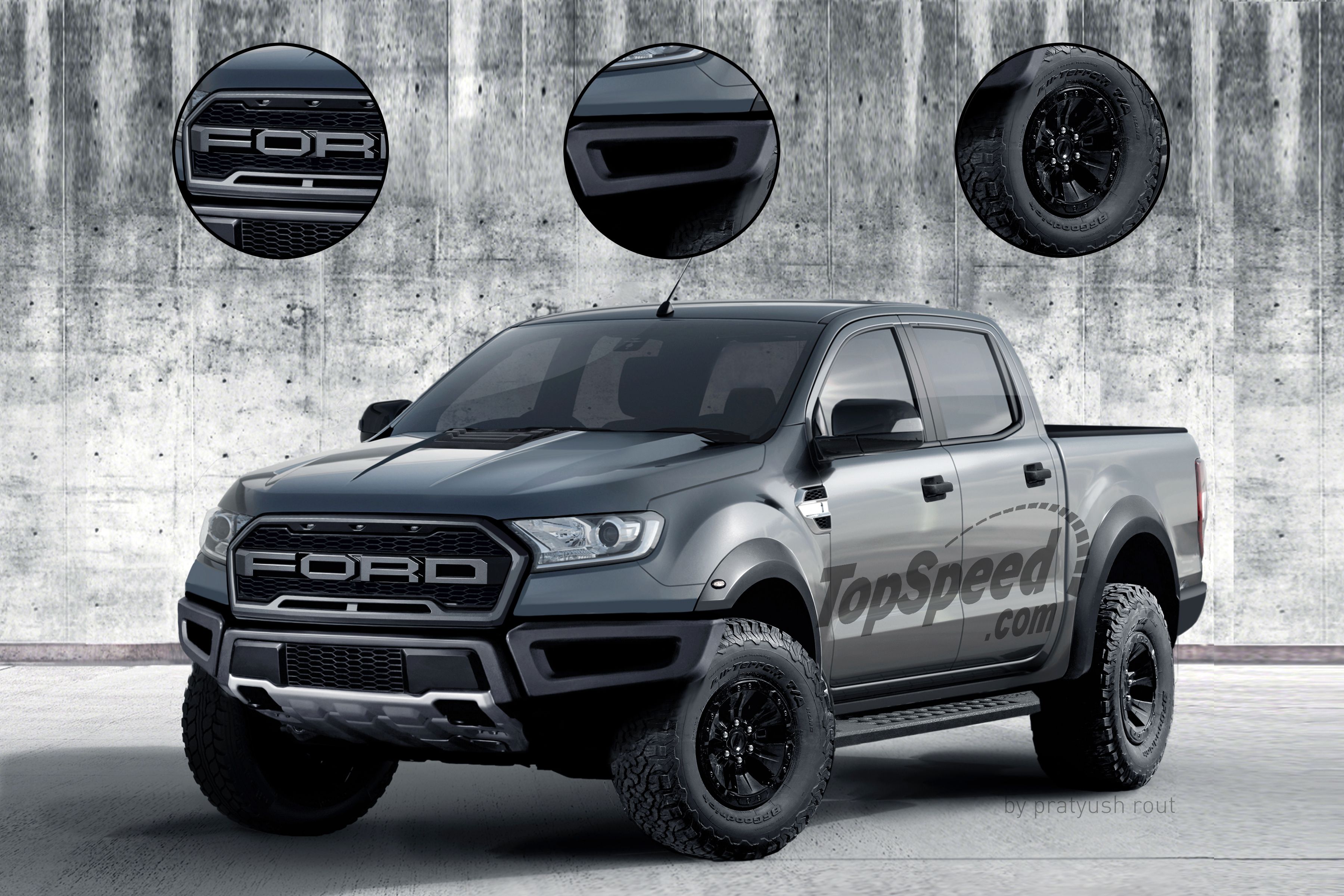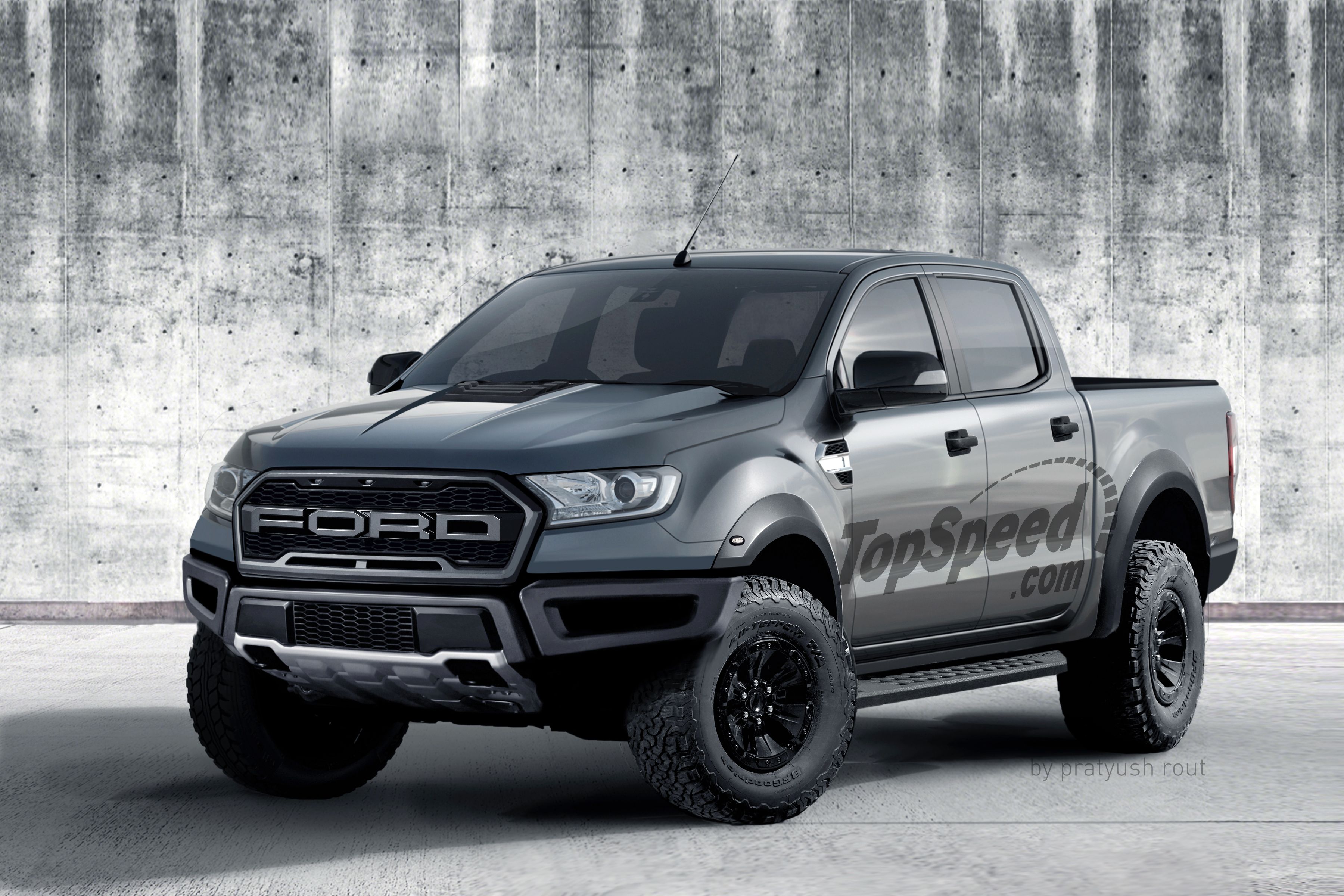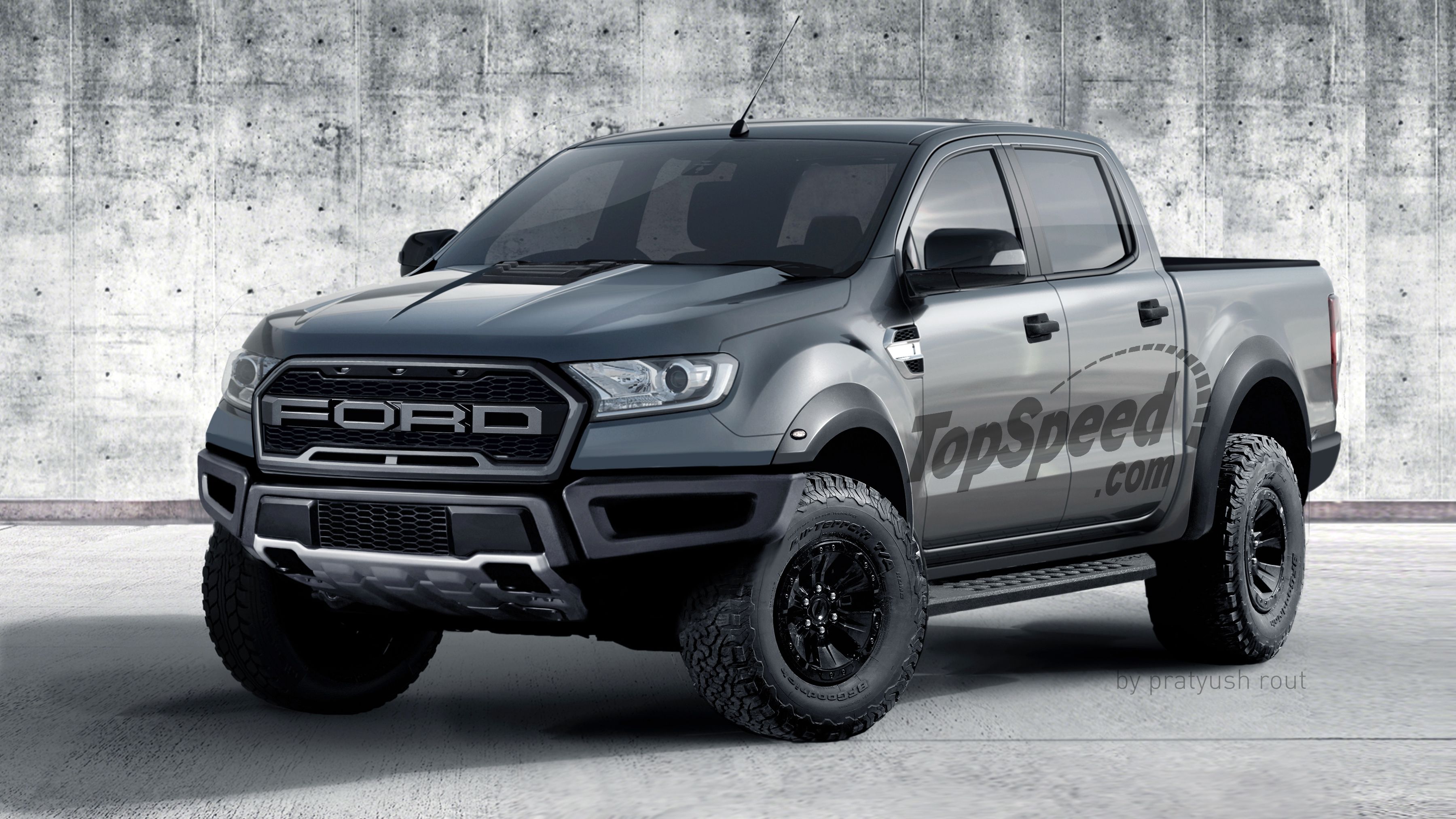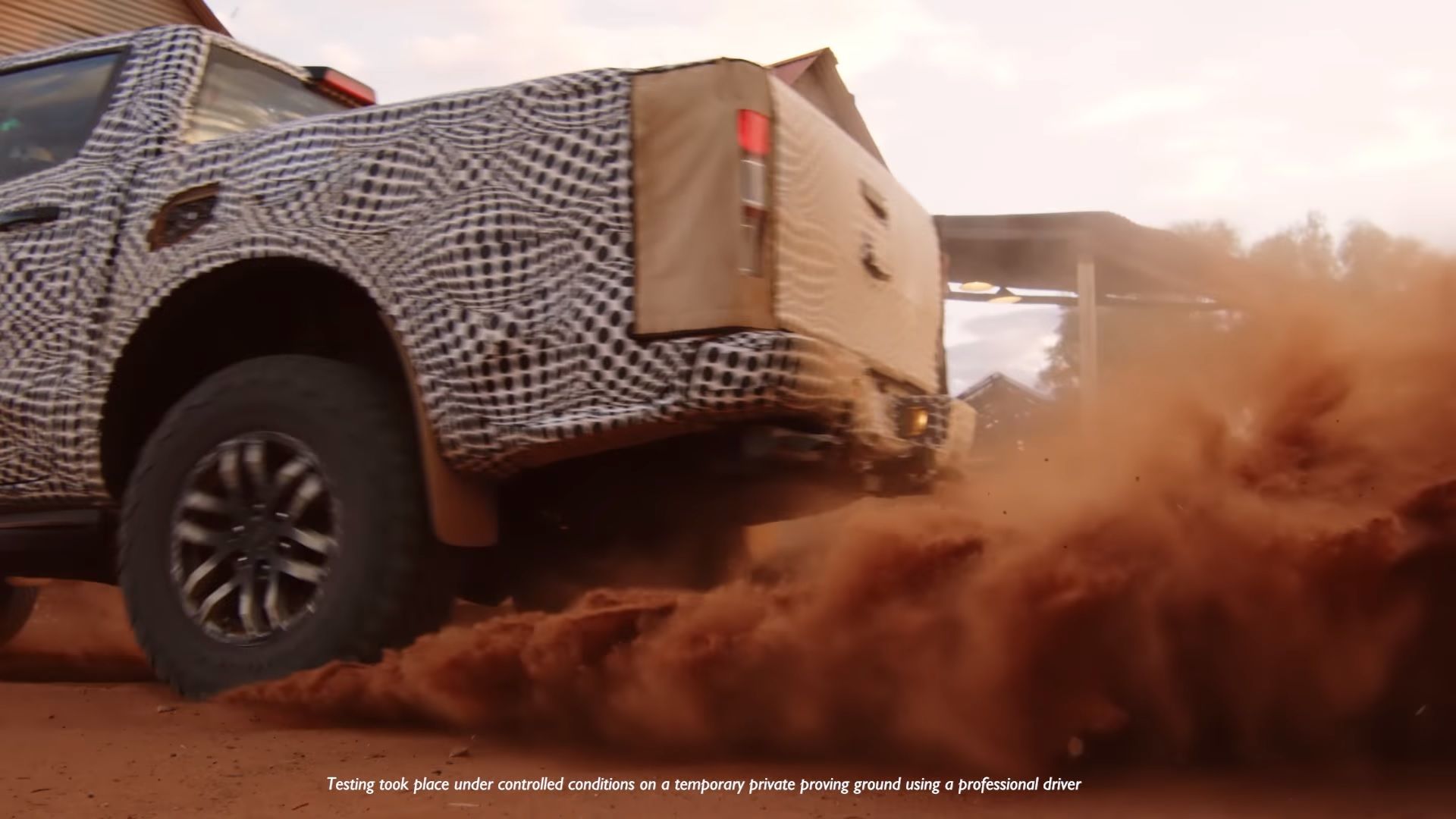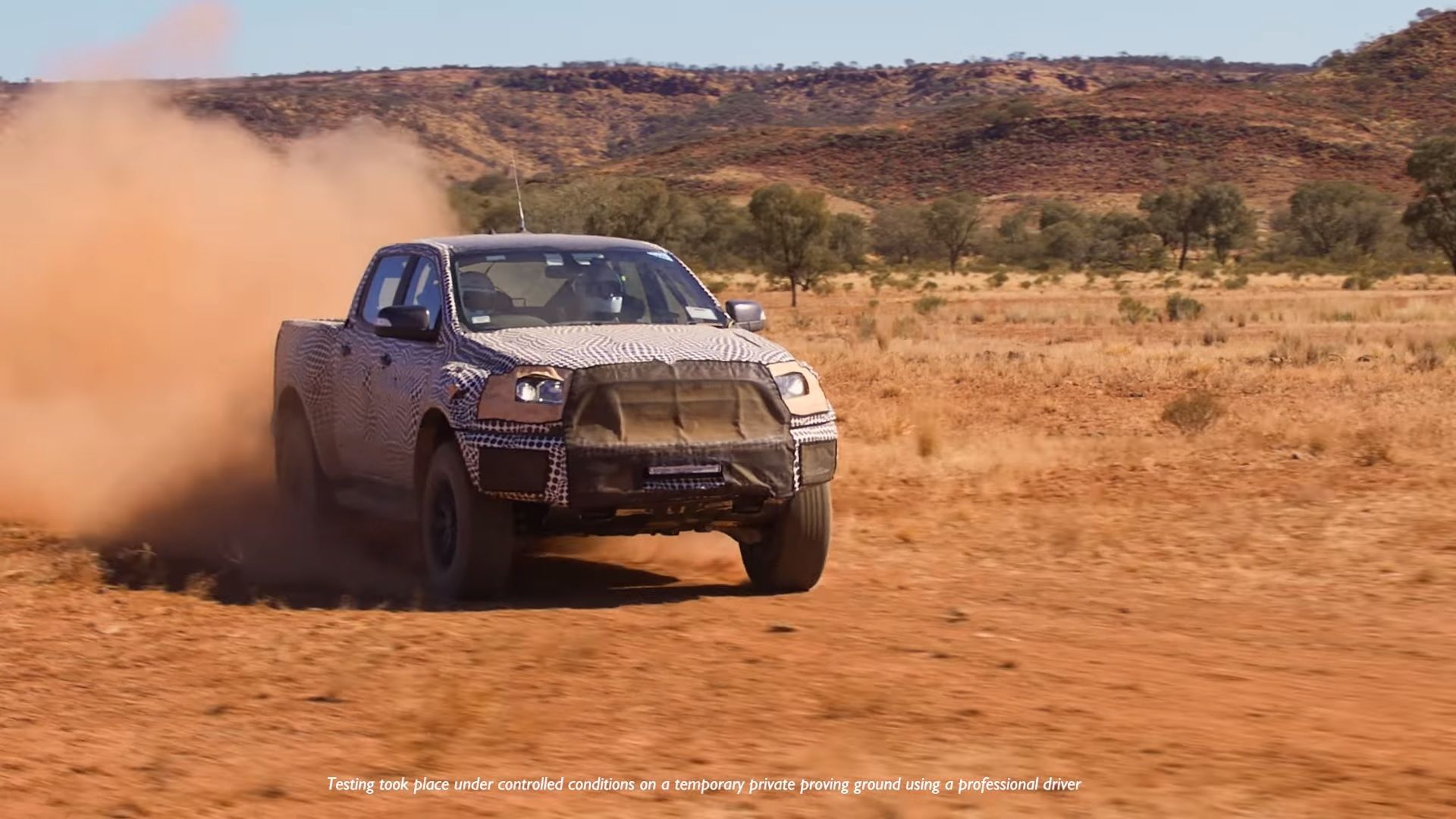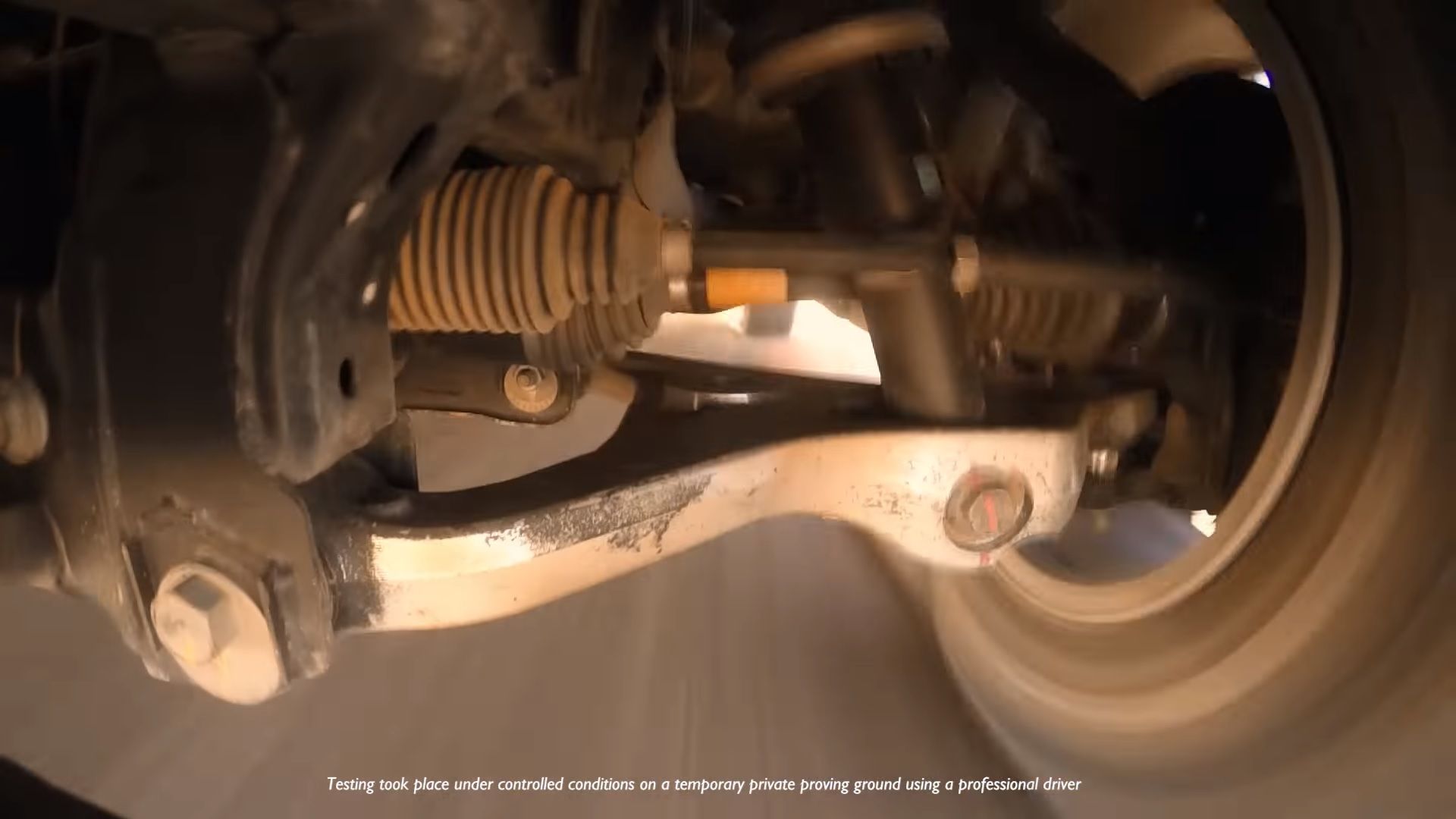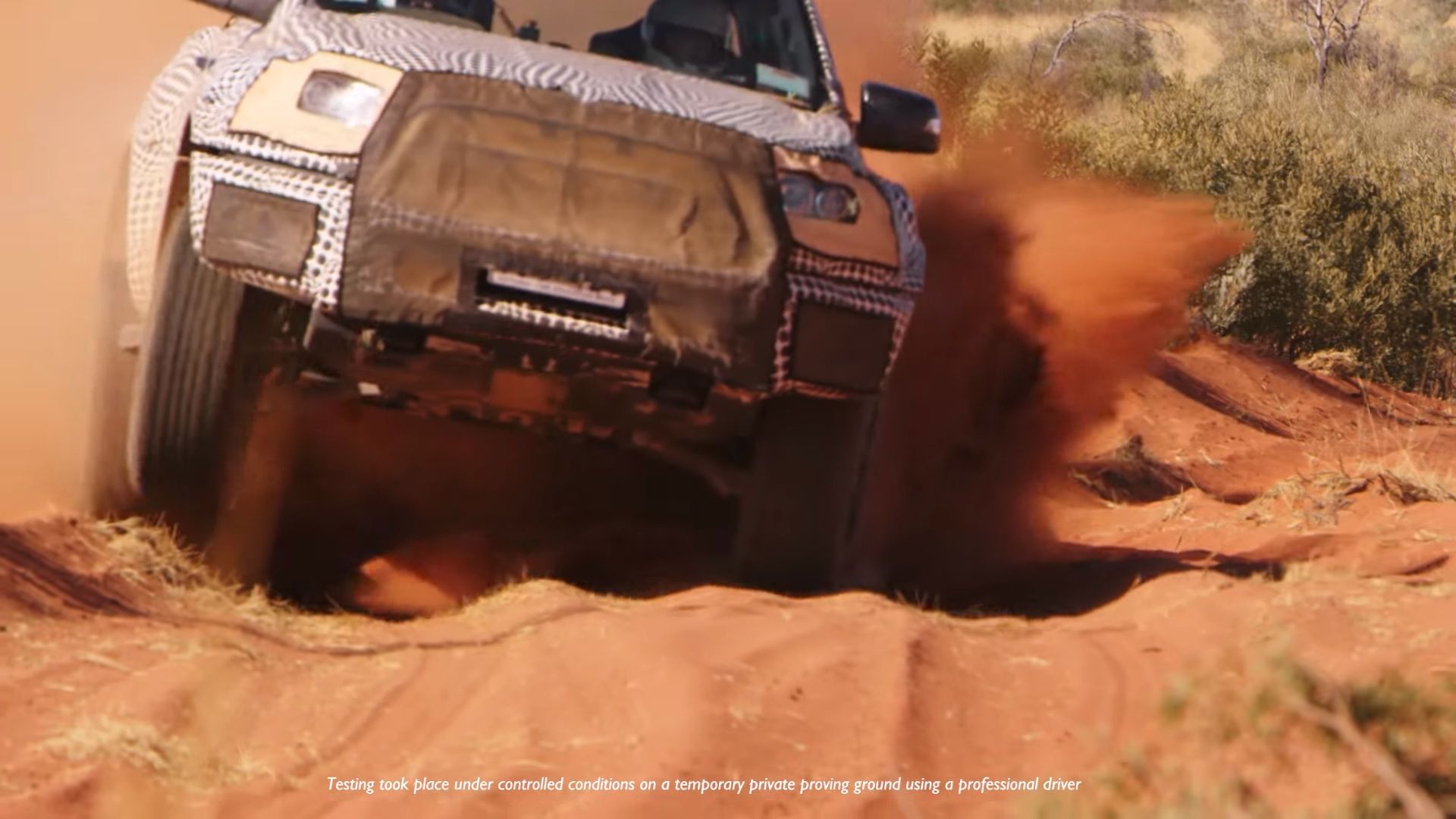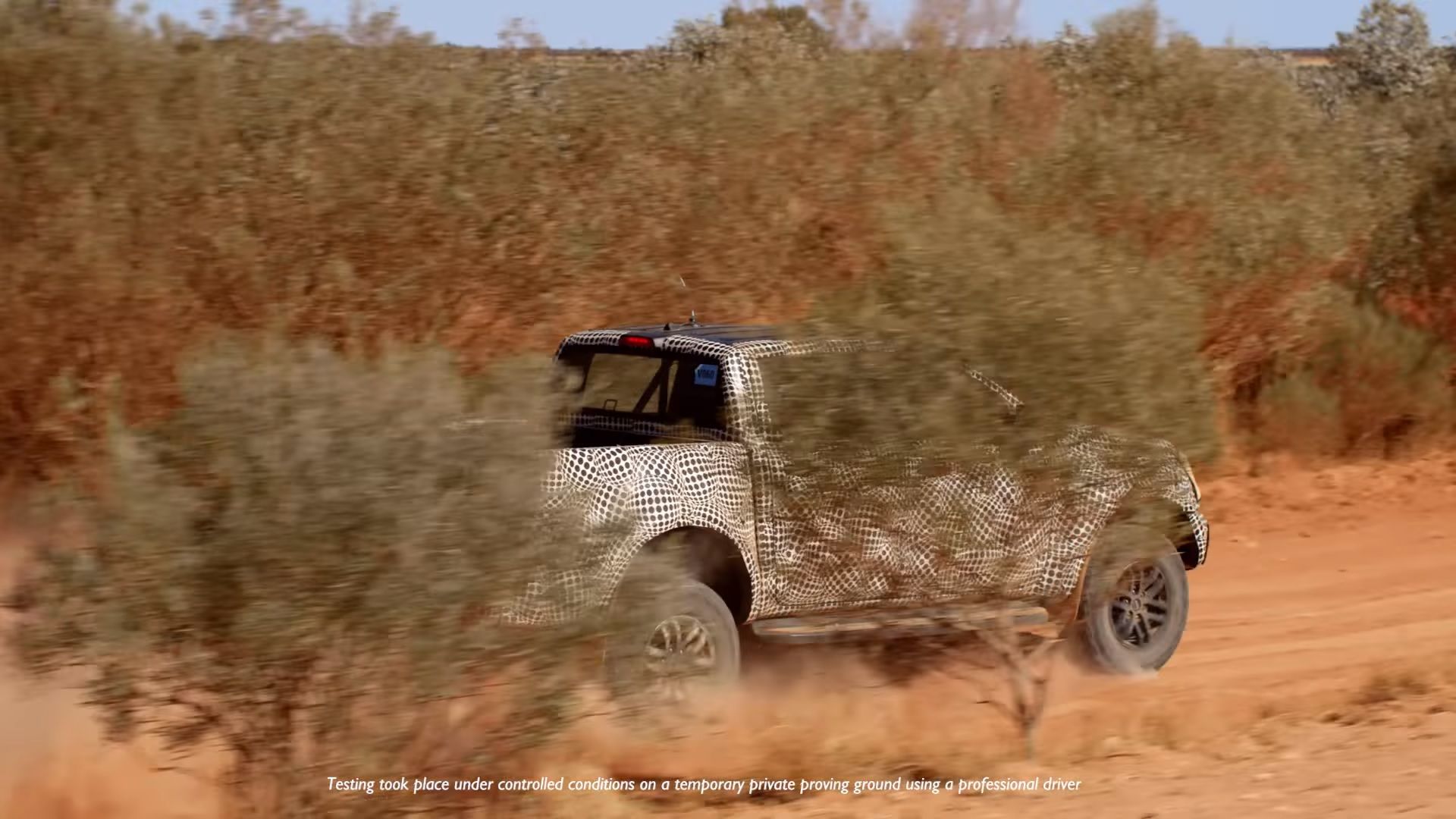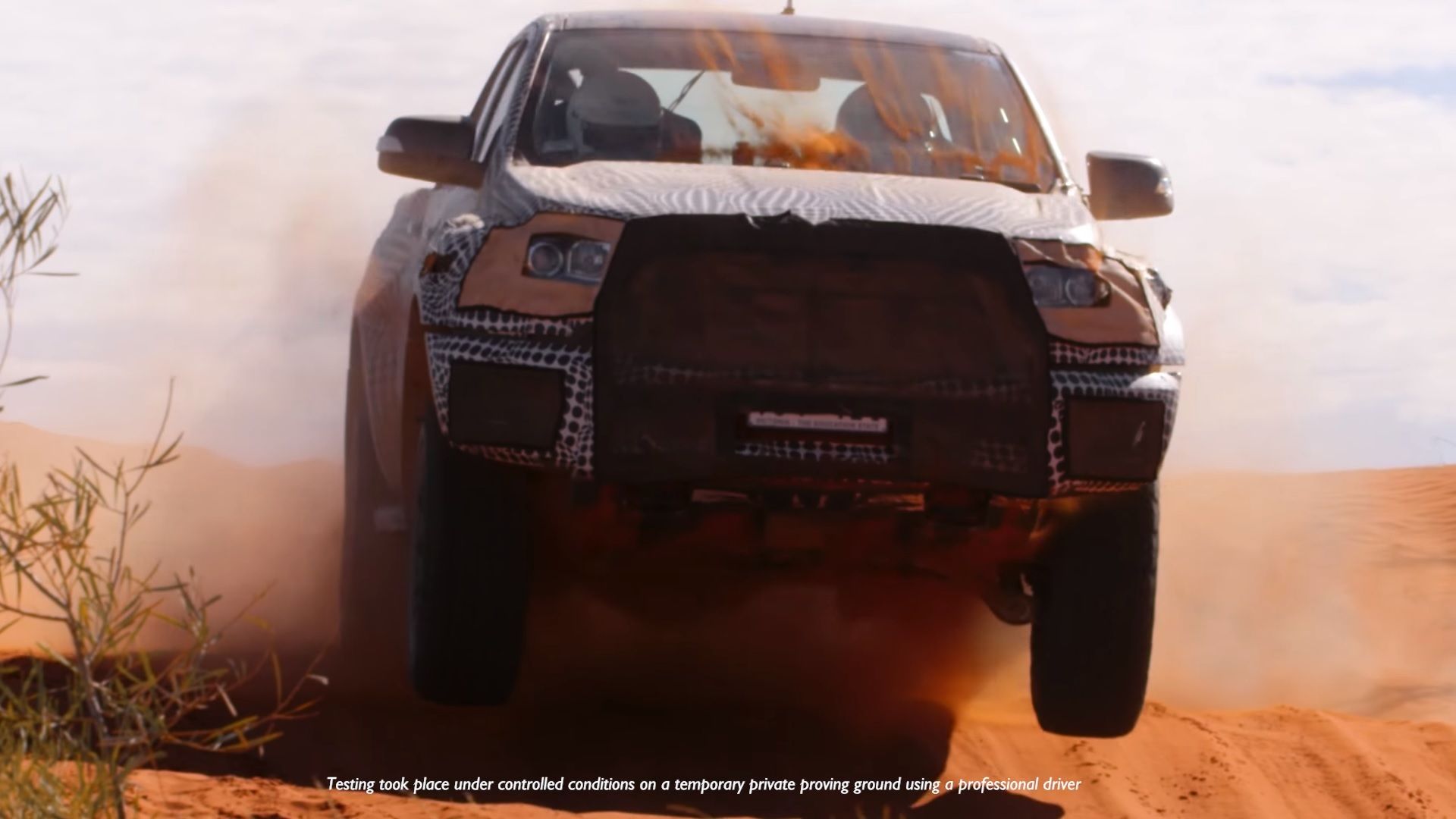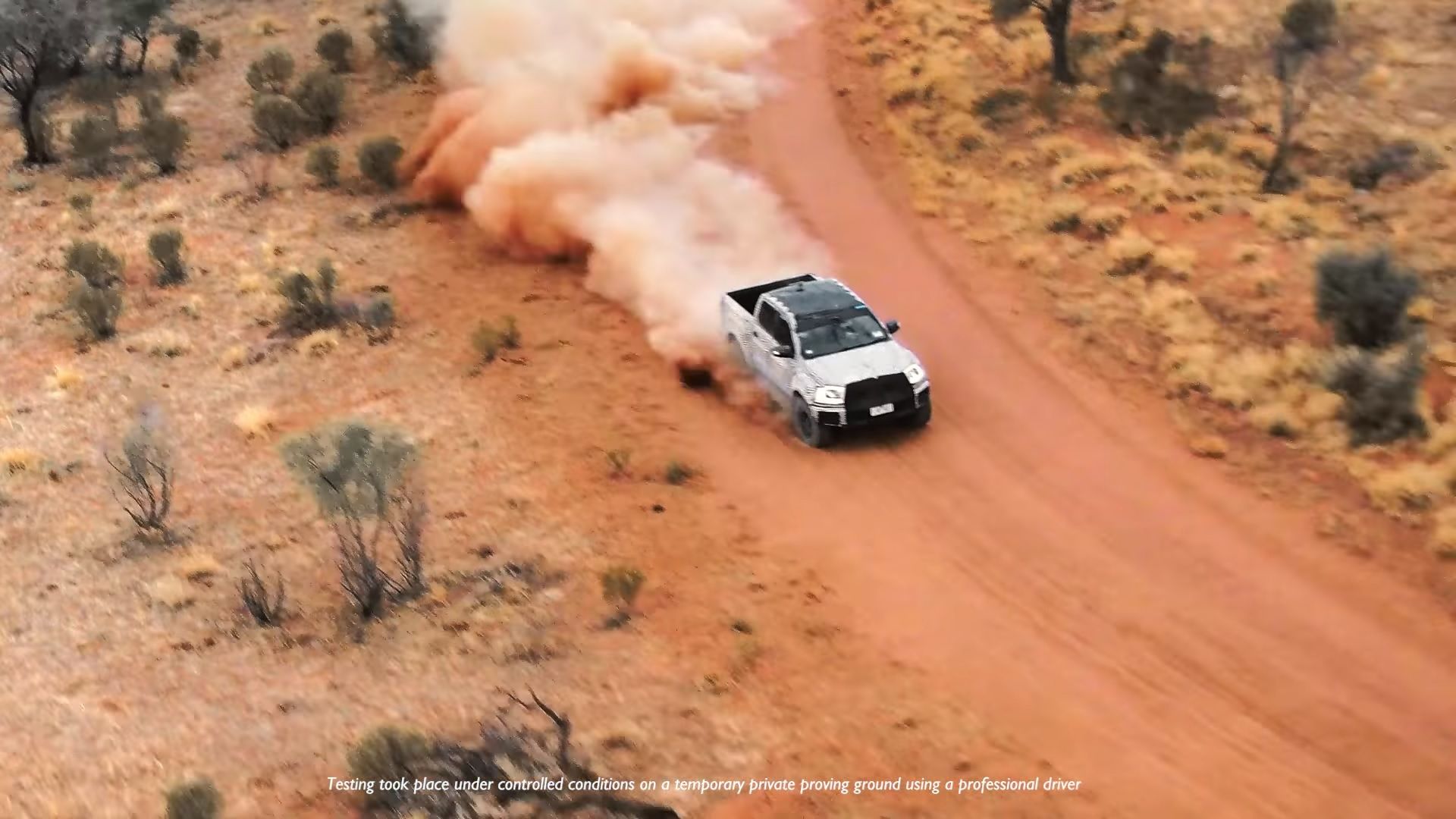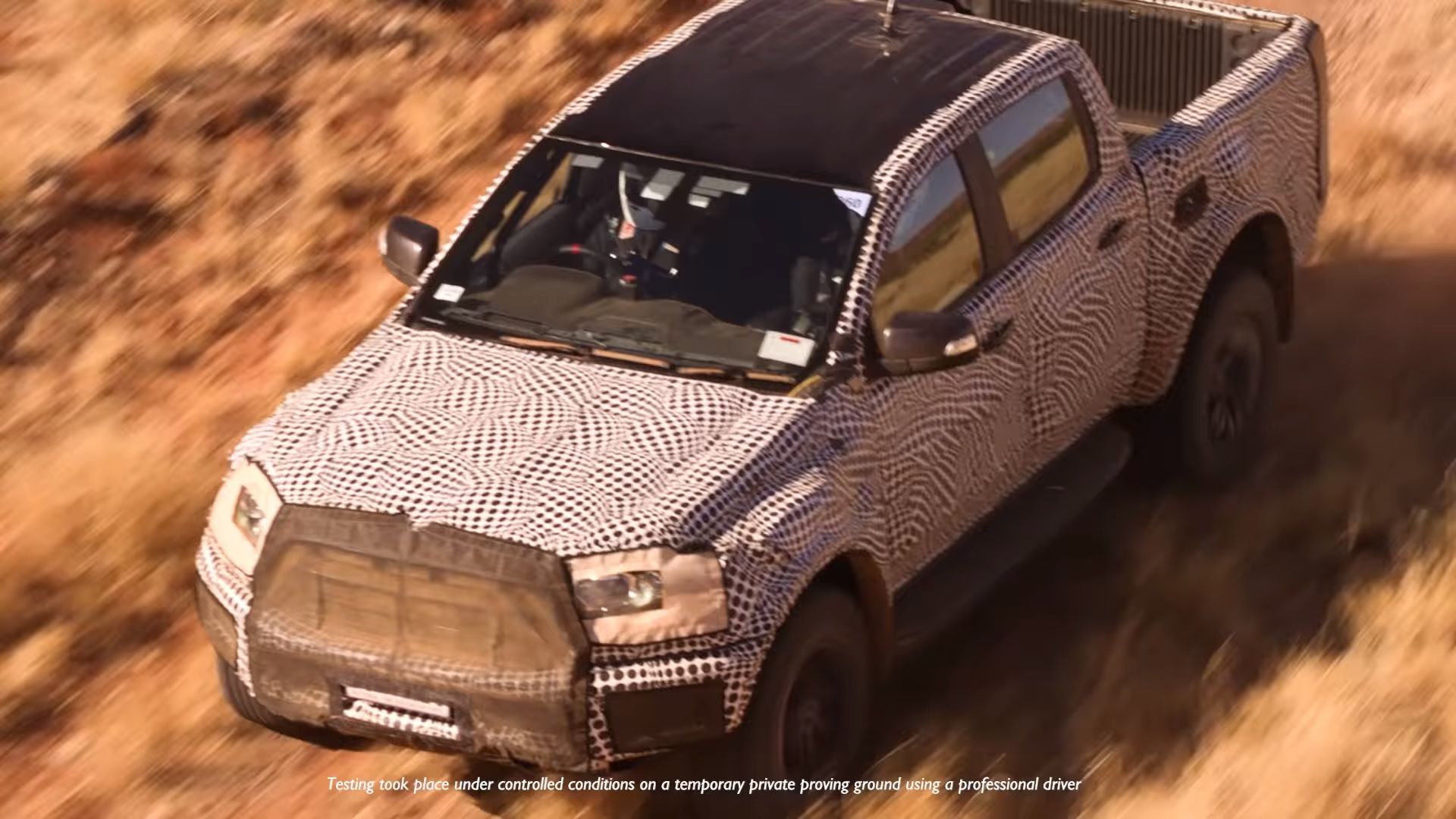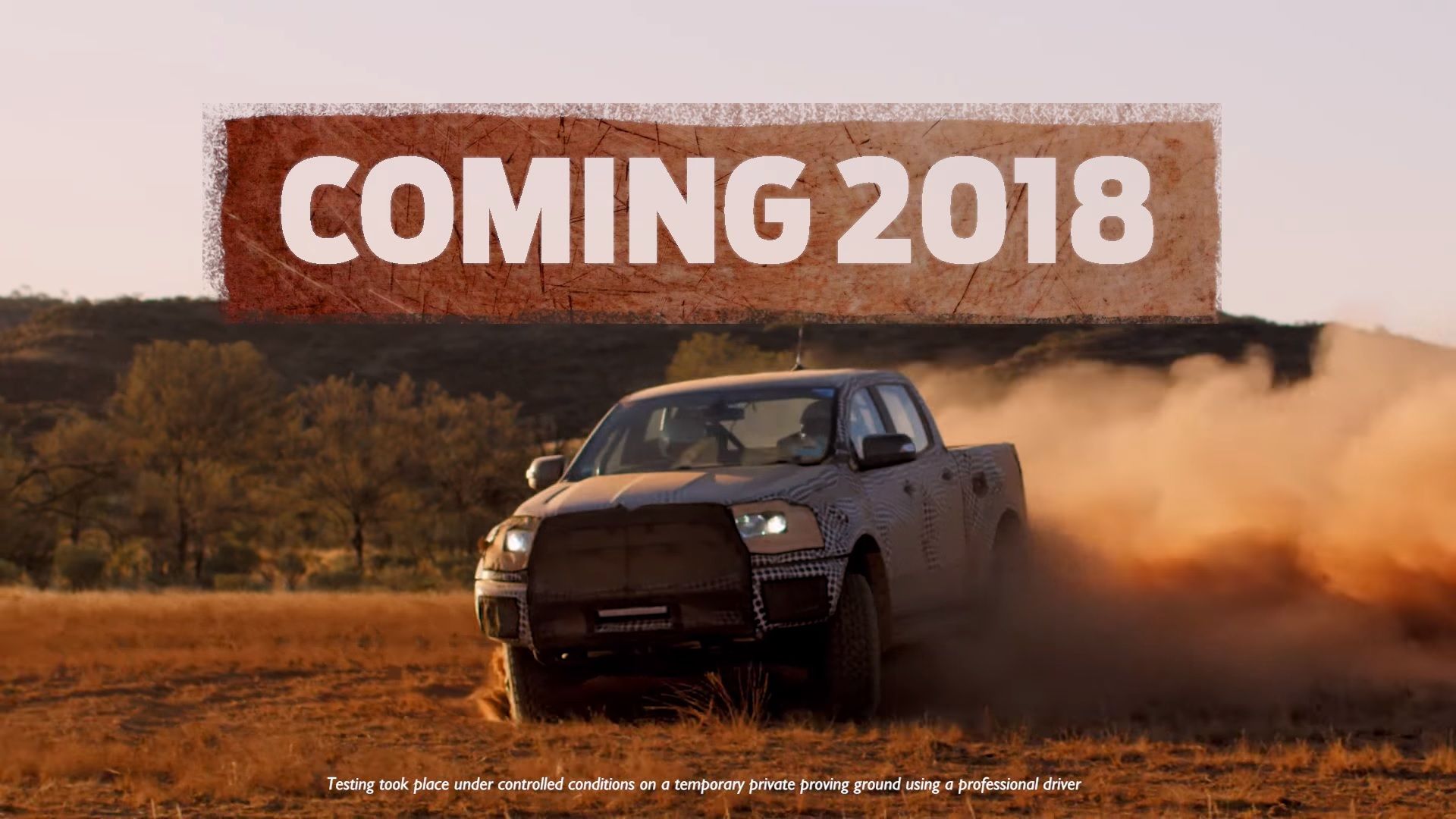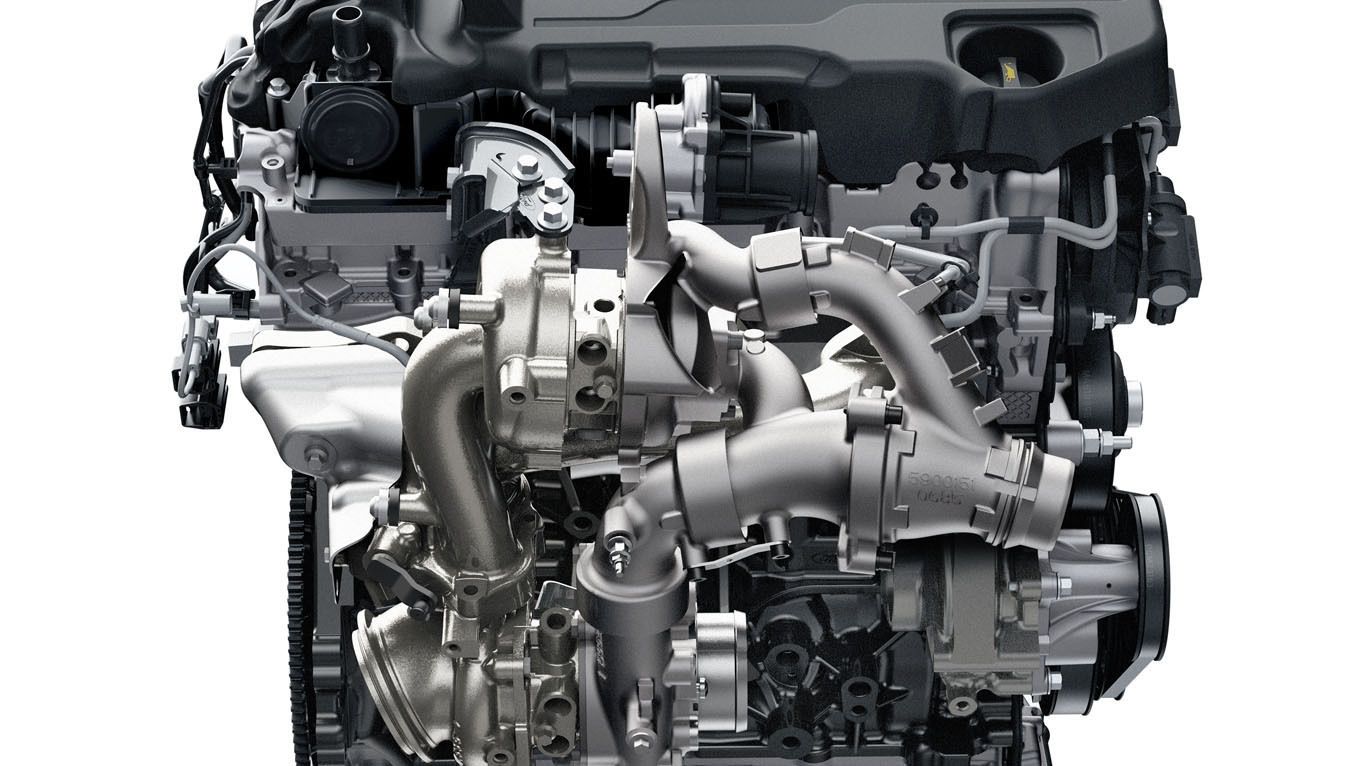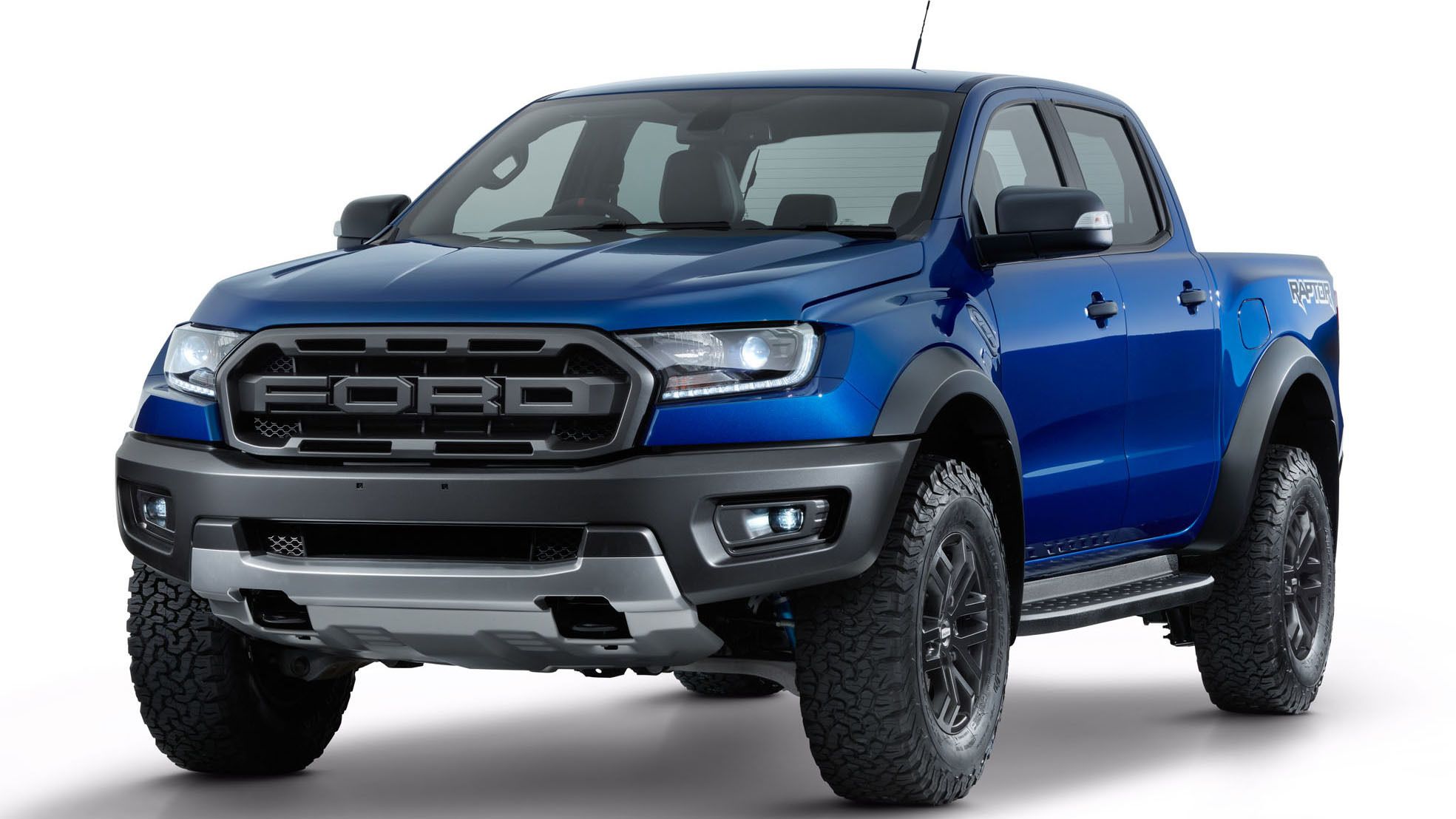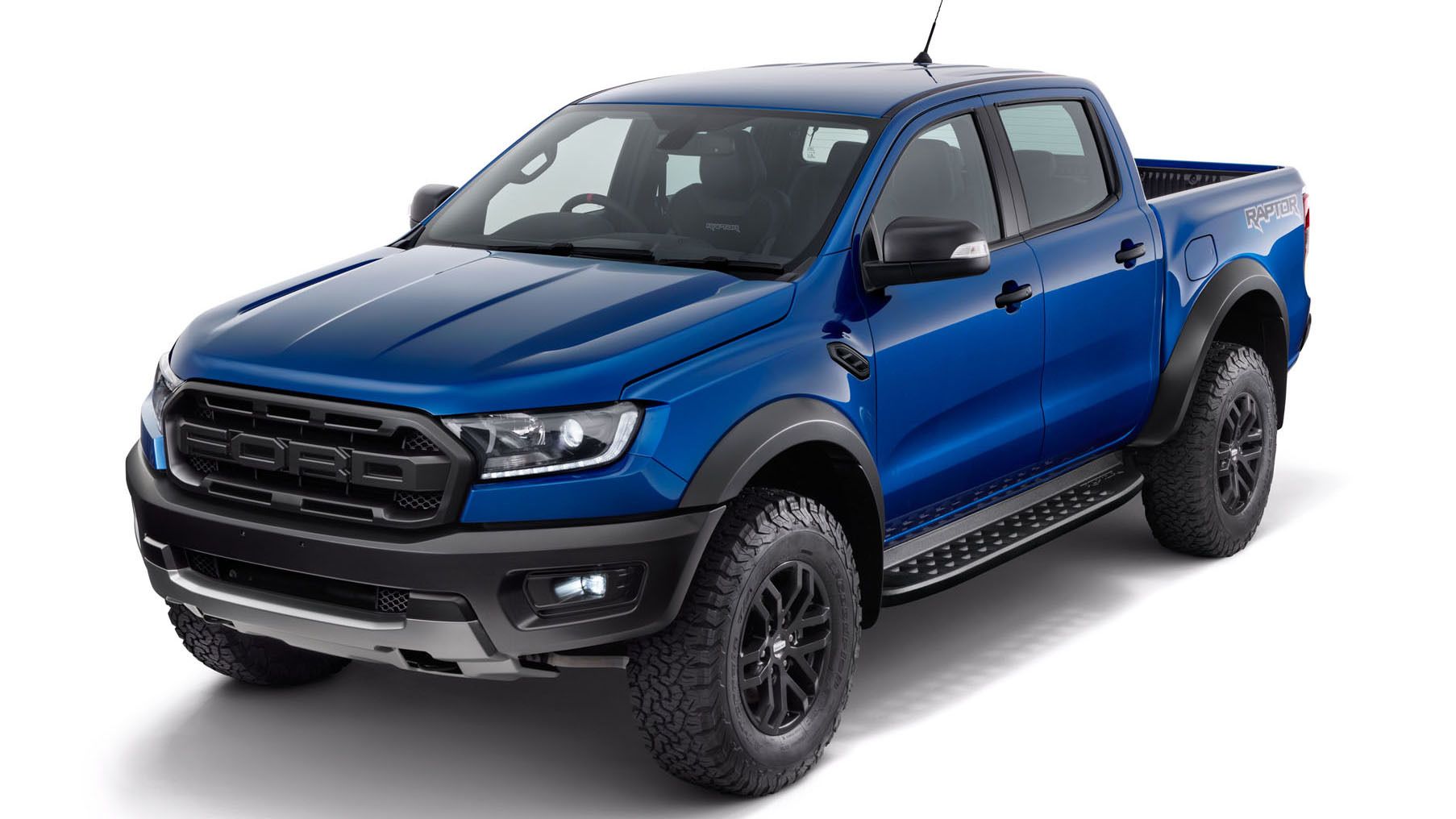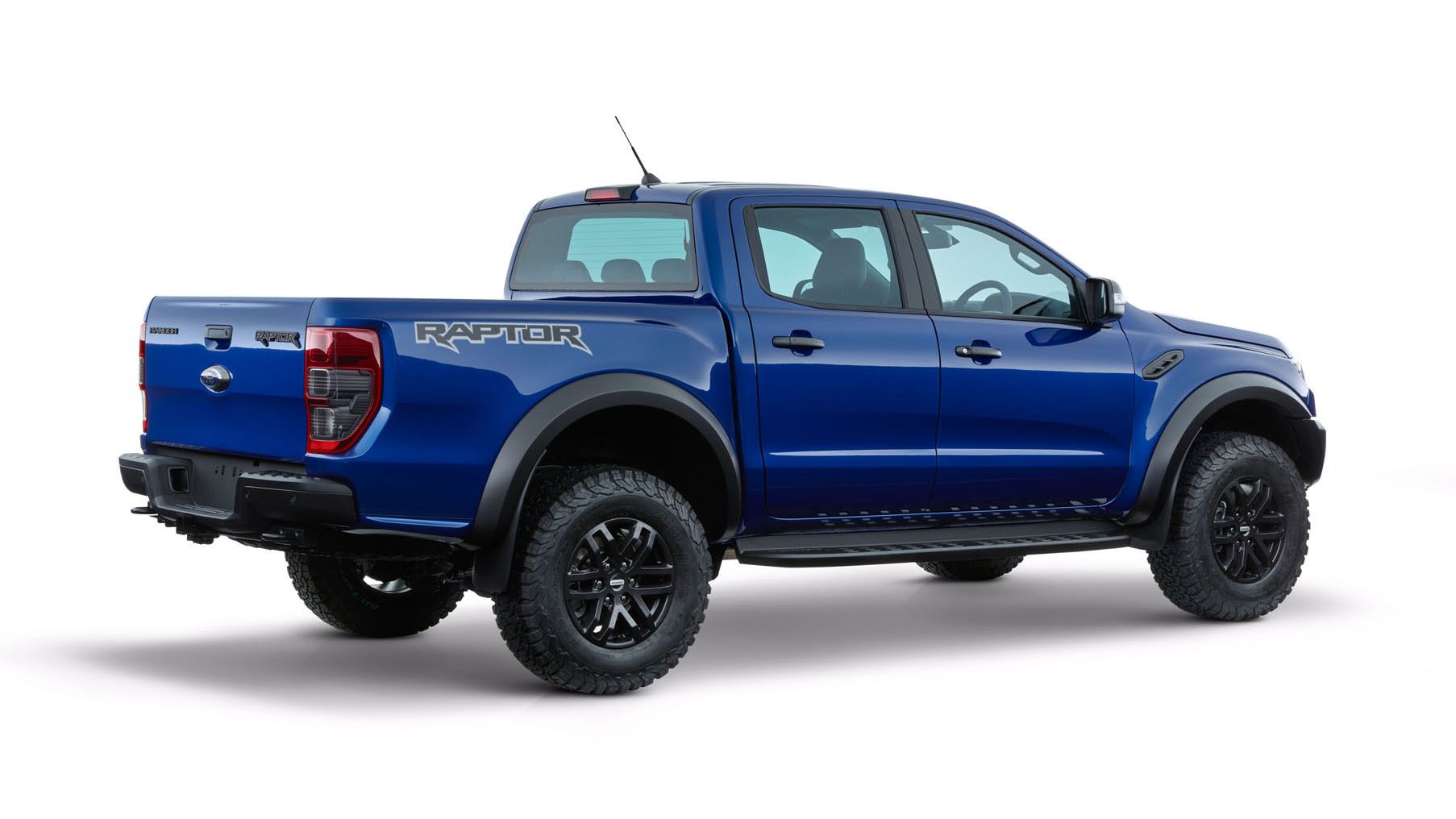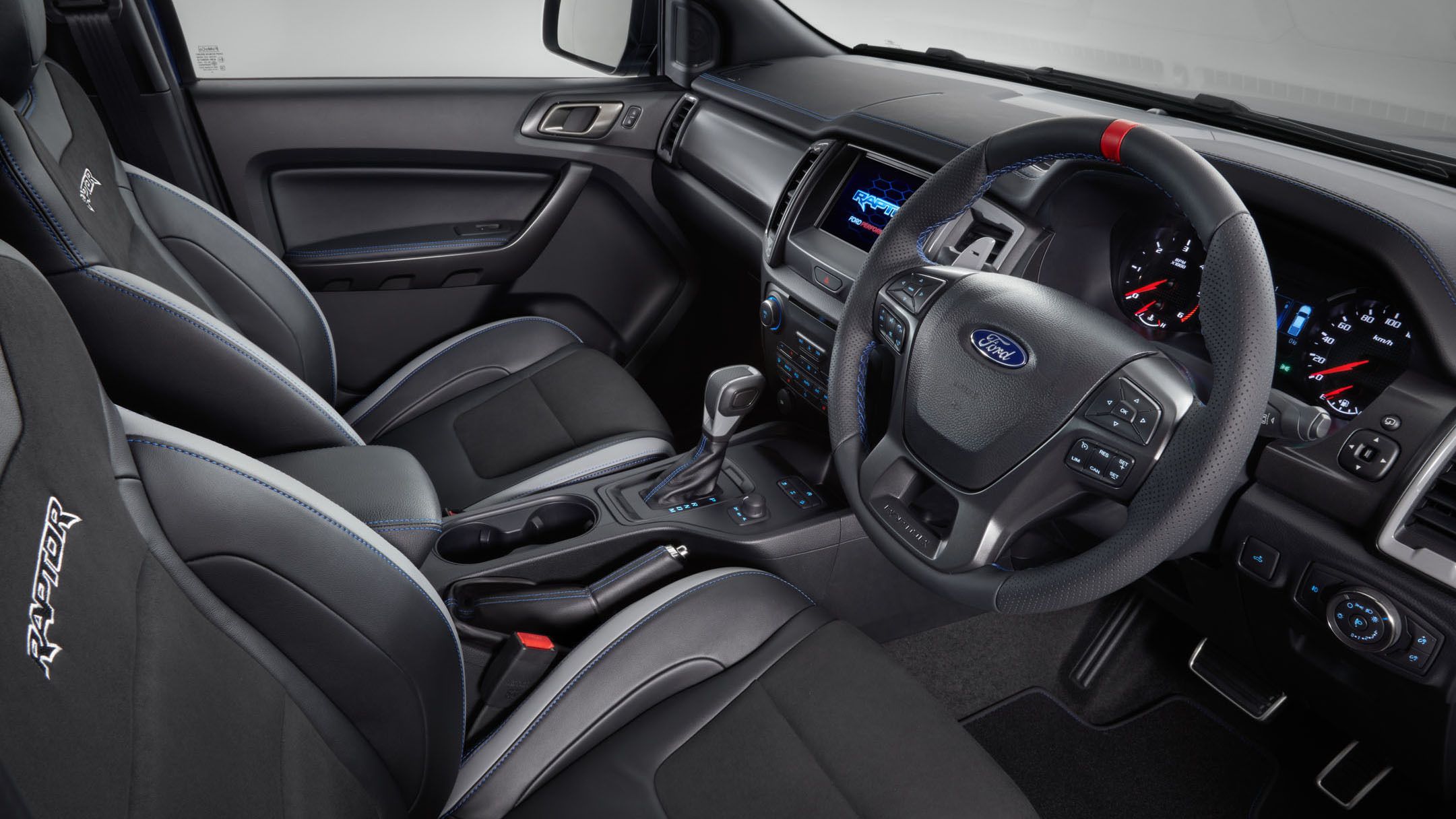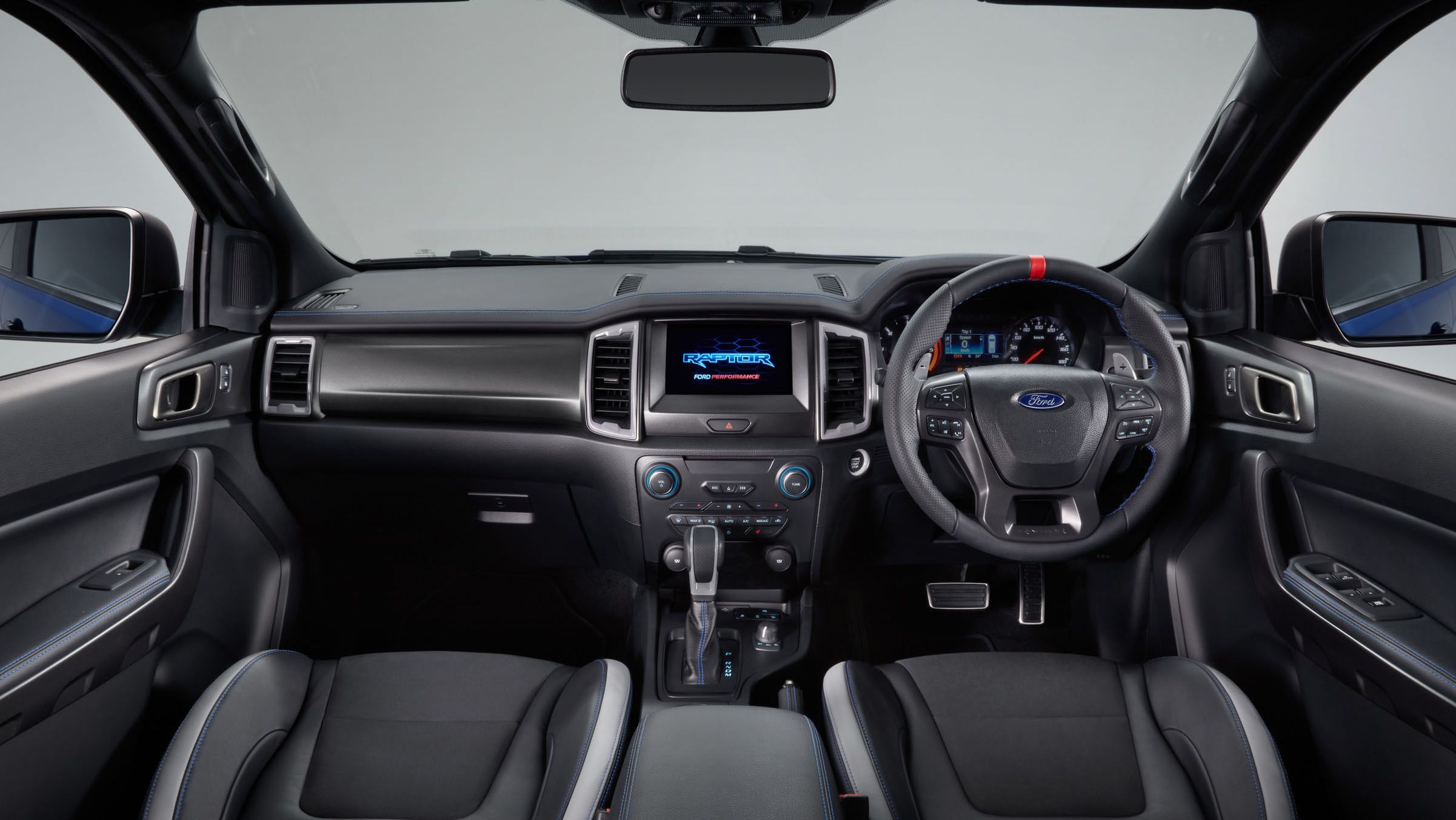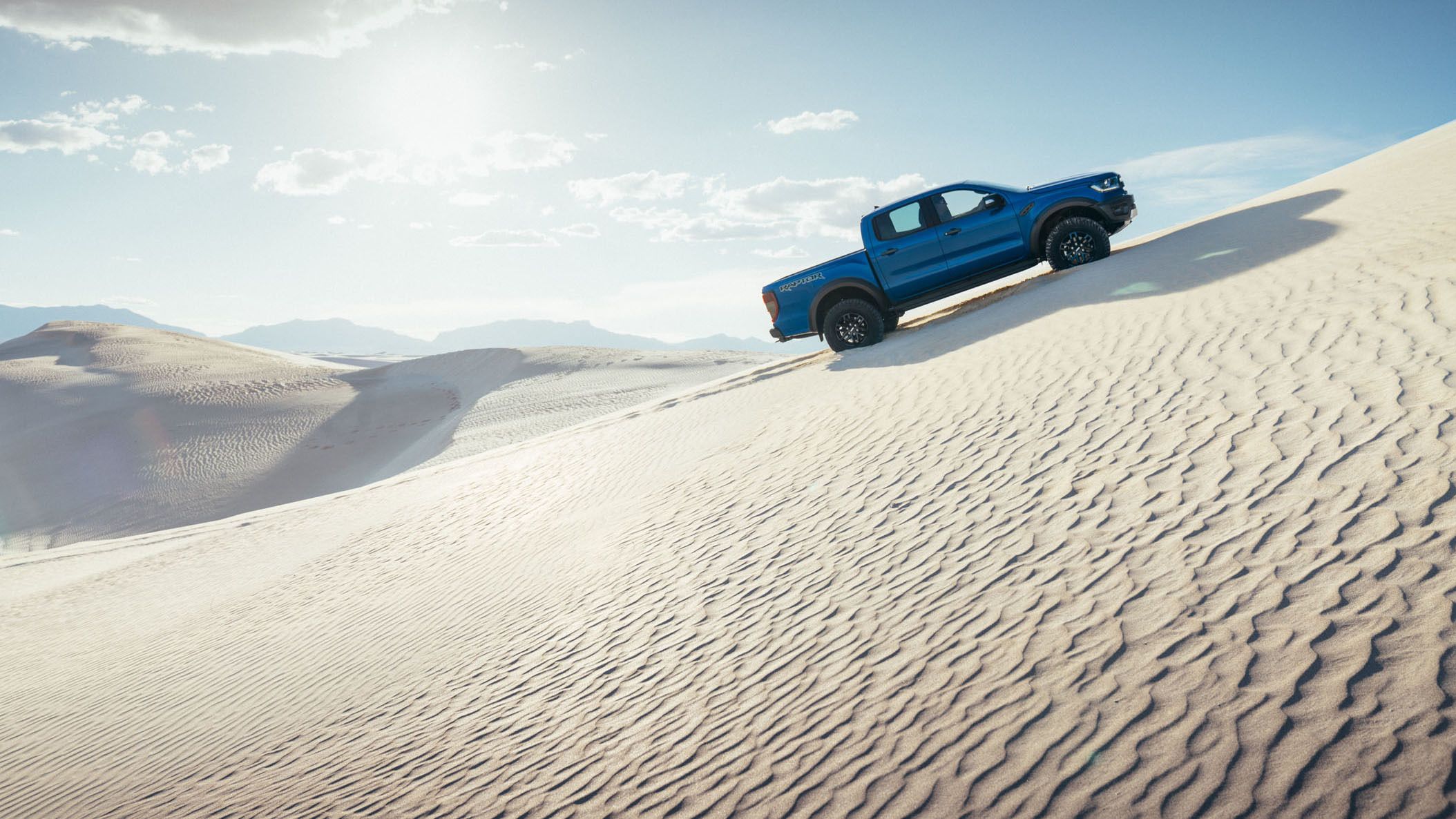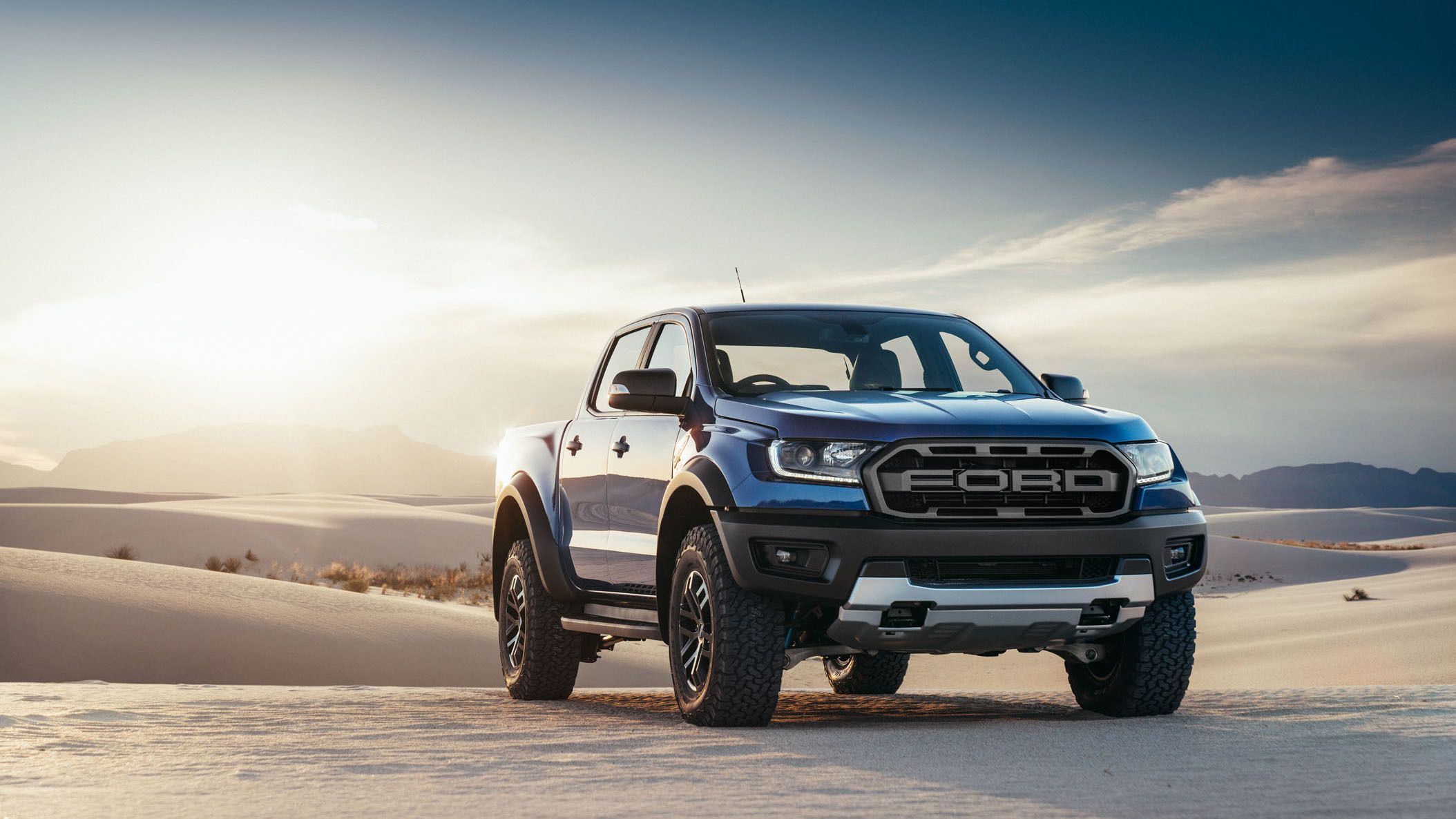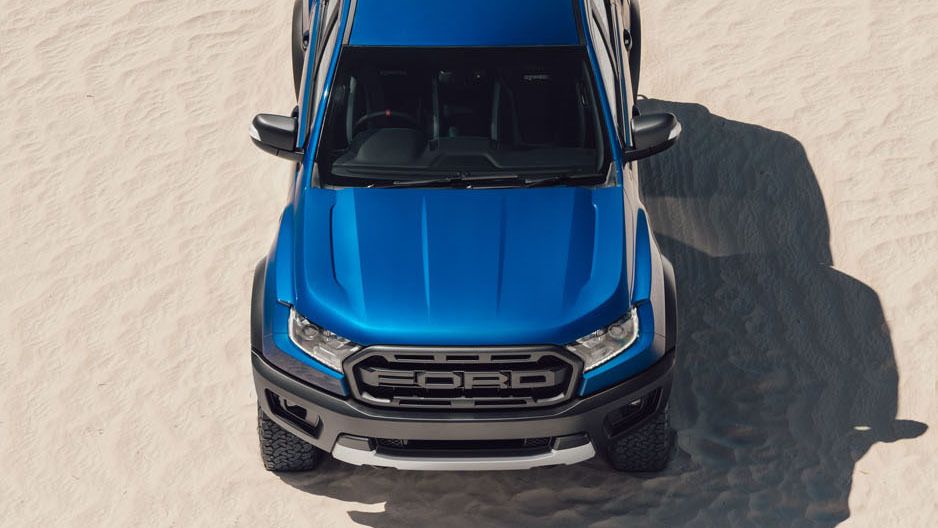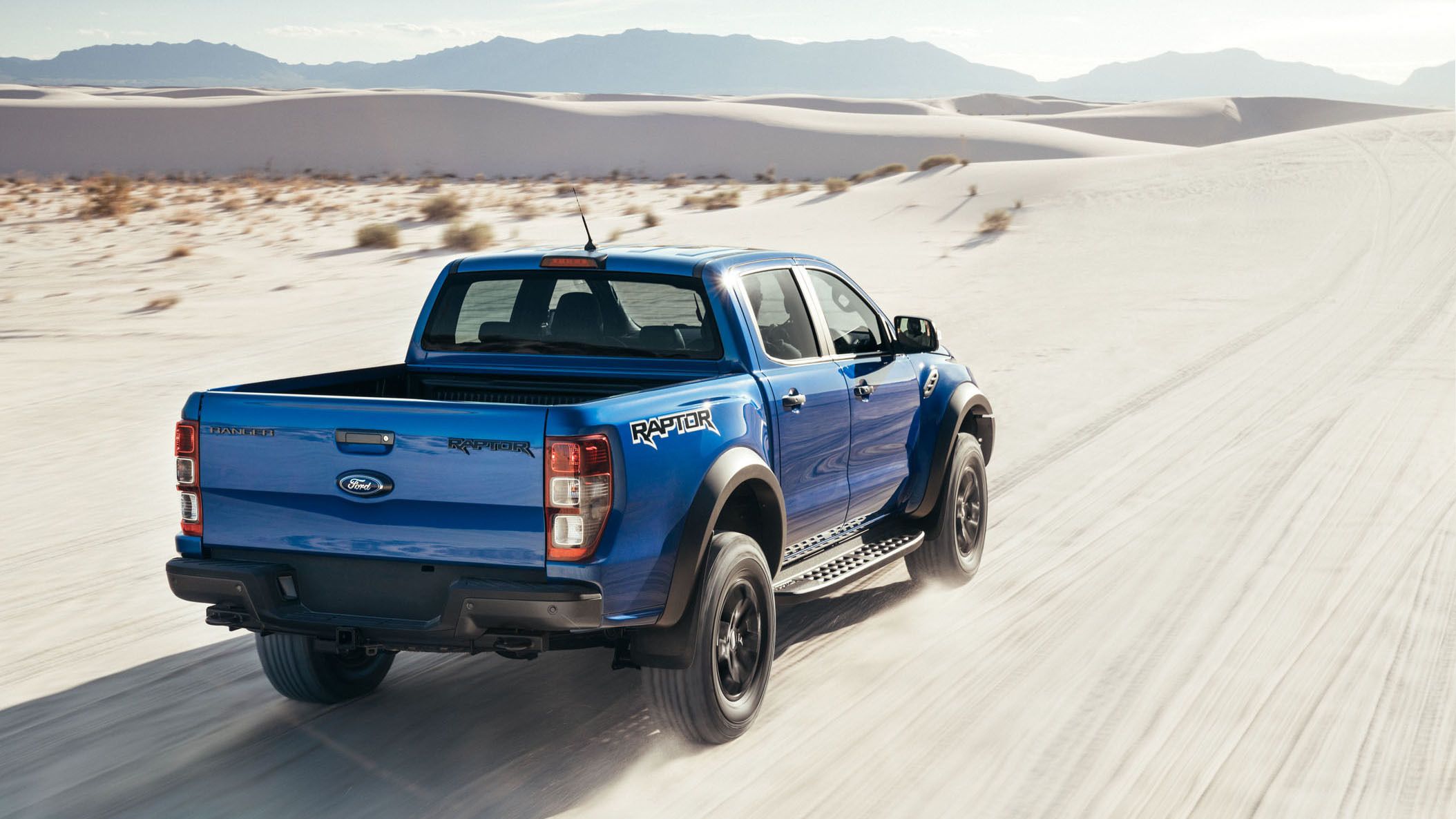The Ford F-150 Raptor was supposed to be a specialty truck designed to last a few model years before being retired. That was in 2010. To Ford’s surprise, the desert-running truck struck a nerve and people lined up to buy them. The Raptor jumped generations with the 2015 F-150’s switch to aluminum body panels, returning to showrooms for the 2016 model year. Well, Ford decided to capitalize on the Raptor’s success and capability by extending the same hard-core off-road tech to the mid-size Ford Ranger pickup.
Debuting for the 2019 model year, the Ranger Raptor is wider, taller, and rides on Fox Racing Shocks and all-terrain tires similar to its big brother’s. Ford also decided the Ranger Raptor needed its own powerplant, electing to design and build a 2.0-liter four-cylinder turbodiesel that makes a respectable 369 pound-feet of torque.
Ford’s initial debut of the 2019 Ranger Raptor happened for the Asia Pacific market that includes countries like China, Thailand, India, the Philippines, and Australia. The U.S.-spec model is expected to debut in the coming months, if not weeks.
Update 02/08/2018: Ford has debuted the 2019 Ranger Raptor for the Asian Pacific market. We’ve got all the details in the review below.
2019 Ford Ranger Raptor
- Make: Array
- Model: 2019 Ford Ranger Raptor
- Engine/Motor: V6
- Transmission: 10-speed automatic
- [do not use] Vehicle Model: Array
Exterior
The 2019 Ranger Raptor is based on Ford’s T6 Global Ranger platform, but “based” is certainly the key word here. Everything from the frame, powertrain, and suspension to the bodywork and interior trim pieces are specific to the Raptor.
The Ranger Raptor’s exterior takes cues from the F-150 Raptor. The grille boasts the bold F-O-R-D lettering with projection-beam headlights and LED daytime running lights to either side. LED fog lights fill the bumper’s stylized cutouts that recall those on the F-150 Raptor. Even the front skid plate and exposed tow hooks are inspired from the F-150 Raptor. Ford says the tow hooks are rated at 9,920 pounds.
The black bumper then connects to the black fender flares for a cohesive, almost one-piece look. The black line follows the flares onto the steel running boards, onto the rear fender flares, and finishes off on the Baja-style rear bumper. Combined with the black-accented wheels and front grille, the Ranger Raptor’s dark lower half gives it a grounded yet almost menacing appearance.
Speaking of the rear bumper, the Ranger Raptor gets a similar design as its big brother, including a receiver hitch and two tow hooks. These are rated at 8,377 pounds. As for those side steps, they are made from high-strength aluminum alloy. Ford says they are designed with holes that drain sand, mud, and snow, while still being extremely sturdy. Apparently, they were subjected to 220 pounds 84,000 times to simulate 10 years of use by a consumer. They are protected from rust with a powder-coat base that’s then covered by “grit paint” designed to resist scratches and give a slip-free finish.
The widened bodywork isn’t just for show. The Ranger Raptor’s front and rear tracks are 5.9 inches wider, though the truck’s overall width is somehow only 0.7 inches wider than stock. The truck’s height is up by 2.0 inches and its ground clearance is increased by 1.8 inches over the Ranger FX4, meaning the Ranger Raptor can clear 11.1-inch-tall obstacles without rubbing.
Naturally, approach and departure angles are improved, with the front bumper allowing for an impressive 32-degree approach angle and the rear bumper giving a 24-degree departure angle.
Ford has several colors for the Ranger Raptor, including Lightning Blue, Race Red, Shadow Black, Frozen White, and a “unique Hero color” called Conquer Grey. These will likely make the transition to the U.S.-spec Ranger Raptor as well.
Interior
The 2019 Ford Ranger Raptor has plenty of interior updates that separate it from its lesser brethren. Open the front door and you’ll immediately notice the heavily bolstered front seats. They have suede inserts in the center section that’s sure to help keep butts planted, while the tall side bolsters are wrapped in two-tone leather with blue contrast stitching.
Sliding into the seats, the driver will notice the performance steering wheel. The grips at 10 and two o’clock are thick and wrapped in perforated leather that’s accented by the same blue contrast stitching found on the seats. At the 12 o’clock position is the familiar red center marker – the same style that’s found on the F-150 Raptor. Also, like the F-150 Raptor, the Ranger Raptor uses magnesium paddle shifters.
Other details include an updated infotainment system with the Raptor logo and dedicated off-road pages, an updated gear shifter with a leather-wrapped boot with that prevalent blue contrast stitching. The Raptor logo can also be seen embroidered into the front seatbacks in a stand-out white color and molded into the steering wheel’s six o’clock position.
Drivetrain
While there weren’t too many surprises with the 2019 Ranger Raptor, the industry was taken aback with Ford’s new powertrain developed specifically for the truck. We expected everything from the 2.7-liter and 3.5-liter EcoBoost V-6 engines to an updated 3.2-liter inline-five turbodiesel, but nobody could have expected Ford’s move.
It’s an all-new 2.0-liter four-cylinder turbodiesel. The engine uses twin turbos mounted in a compound arrangement. That means the smaller turbo spools up first, providing boost at lower engine speeds, while the larger turbo spools up soon after and provides more boost when the engine is spinning at faster revs. The setup allows the benefits of the turbocharger to shine through without the dreaded turbo lag remaining an issue. The result is an impressive 210 horsepower and 369 pound-feet of torque.
While the engine was a shock, Ford’s transmission choice was not. It’s the new 10-speed automatic it co-developed alongside General Motors. The high-tech hardware is shared between the automakers in everything from the Chevrolet Camaro ZL1 to the 2018 F-150. For this application, Ford gave the gearbox a unique calibration designed to pair with the new 2.0-liter turbodiesel and catering to high-speed off-road driving.
The powertrain spins a part-time transfer case that powers the front wheels only when 4WD is turned on. Otherwise, the rear wheels are getting the power. Like the F-150 Raptor, the Ranger Raptor comes with sophisticated drive modes that help the driver choose the right settings. For example, Rock mode automatically engages 4WD Low range while Baja mode opts for 4WD High. Other modes include Normal, Sport, Grass/Gravel/Snow, and Mud/Sand.
Ford says it did thousands of hours of testing on its new 2.0-liter, even going so far as to run the engine wide open for 200 hours while the twin-turbo system glowed red hot.
Ford didn’t announce any fuel economy estimates for the Ranger Raptor, but we’d expect the mid-size, diesel-powered rig to get at least 27 mpg on the highway and around 20 mpg in the city. Keep in mind those big tires have more rolling resistance than the average all-season. The Raptor’s extra weight from 4WD and skid plates will also have a negative effect on efficiency.
Another big question is whether Ford will use the 2.0-liter turbodiesel in the U.S.-spec Ranger Raptor. Only time will tell, but our guess is yes.
Suspension & Underpinnings
The 2019 Ford Ranger Raptor rides on a unique frame that’s designed to withstand the rigors of high-speed off-roading. Ford took the same measures on the F-150 Raptor, too, ensuring the fully boxed ladder frame would withstand jumps and extra hard abuse.
Suspension wise, the Ranger Raptor uses Fox Racing Shocks at all four corners. Up front, the shocks are incorporated in a MacPherson strut-style configuration with a coil spring mounted to the outside of the shock. Aluminum control arms hold the wheel and tire in place.
The rear suspension is more interesting. The standard Ford T6 Ranger uses a solid rear axle with a multi-link and coil spring suspension system. Rather than dumping this configuration for a traditional leaf spring setup like the F-150 Raptor, Ford kept the design. Of course, things are updated with thicker parts to handle the abuses of off-roading. The Fox Racing shocks are, like the front, mounted inside the coil spring. This both saves space and helps deliver the best ride available. What’s more, Ford kept the T6 Ranger’s Watt’s Link mounting.
A Watt’s Link works to keep the axle located in the same position horizontally throughout its veridical travel. With less advanced methods like a panhard bar, the axle will shift to one side as it bounced closer to the frame. The double connections afforded by the Watt’s Link allow the axle to freely move up and down but not left and right. Of course, the track bars connected to the frame ahead of the rear axle hold the entire axle assembly in place fore and aft.
Like the suspension, Ford upped the ante with the braking system. The front brakes use dual piston calipers that are 9.5mm larger than stock and clamp on 13-inch vented rotors that are 1.25 inches thick. Out back, the rear discs are also 13 inches in diameter but are only 0.94 inches thick. The rear only get a single-piston caliper, but they are still larger than the standard Ranger’s.
The Ranger Raptor rolls on 285/70R17-series BFGoodrich All-Terrain T/A KO2 tires mounted on 12-spoke alloy wheels. In other “tire speak,” that means these BFGs are 33 inches tall.
Pricing
Ford has not released pricing for the 2019 Ranger Raptor. Of course, if it had, the pricing would still be for the Asian Pacific market and might not reflect what the truck will cost in the U.S.
Here in North America, we’re betting Ford will align the Ranger Raptor very closely to the Chevrolet Colorado ZR2 and Toyota Tacoma TRD Pro. Those trucks start at $40,995 and $40,960 respectively.
Competition
2018 Chevrolet Colorado ZR2
The new-for-2018 Colorado ZR2 is perhaps the Ranger Raptor’s strongest competitor in terms of performance. The truck uses high-tech, spool-valve dampers within its beefy suspension system, along with a fully locking front differential a locking rear differential, and a part-time, two-speed transfer case. The suspension allows for a full 8.6 inches of wheel travel up front an 10 inches out back.
As mentioned, the Colorado ZR2 can be had with either the 3.6-liter gasoline V-6 or the 2.8-liter Duramax four-cylinder turbodiesel. Both have their merits. The V-6 makes 308 horsepower and 275 pound-feet of torque, while the baby Duramax pumps out 181 horsepower and 369 pound-feet of torque. An eight-speed automatic transmission comes with the V-6 and the Duramax gets a six-speed automatic.
Pricing starts at $40,995, but can quickly climb with added options.
Read more about the 2018 Chevrolet Colorado ZR2.
2017 Toyota Tacoma TRD Pro
The Tacoma has been the reigning sales champ of the mid-size category for over a decade now, and the hottest flavor of Toyota’s Taco offers outstanding off-road capability with mild manners on the street. The Tacoma TRD Pro uses 2.5-inch diameter Fox Racing Shocks paired with strengthened front control arms and a leaf-spring suspension out back. Those with the automatic transmission get Toyota’s Multi-Terrain Select and Crawl Control systems. The former is basically different drive modes for various terrains and the latter is like an off-road cruise control that allows the driver to concentrate on steering through tight, low-speed obstacles.
Power comes from Toyota’s 3.5-liter V-6. This naturally aspirated engine uses both Otto and Atkinson combustion cycles to deliver decent fuel economy under light load and 278 horsepower and 265 pound-feet of torque at full tilt. Sadly, this makes the Tacoma the least-powerful truck in the segment. Still, it performs admirably in nearly all conditions besides highway passing.
Pricing starts at $40,960 for manual-equipped models and $42,960 for the automatic. The price jump not only includes the transmission, but the addition of the Multi-Terrain Select and Crawl Control systems – either of which are available with the stick shift.
Find out more about the 2017 Toyota Tacoma TRD Pro.
Rendering VS Reality
|
|
ids=722440,765831 |
no_overlay=true> |
it turns out our artist’s rendering of the Ford Ranger Raptor is nearly spot-on with the actual truck. From the grille, front bumper, tires, fender flares, and side steps, our artist nailed the overall look.
The minor aspects our rendering didn’t correctly guess were the fog lights in the bumper, the sharpened shape of the fenders, the fender vent shape, and the absent hood vent. We also missed the changes Ford brought to the entire 2019 Ranger lineup, including the new LED daytime running lights beneath the headlights and the radio antenna’s new location at the rear of the cab.
But seriously, our rendering was darn close to what Ford debuted.
Conclusion
The 2019 Ford Ranger Raptor is one heck of a truck. It takes the awesome aspects of the F-150 Raptor and incorporates them into the Ranger’s smaller, more nimble package. The truck is guaranteed to be a blast to drive and will likely be more capable than its big brother. After all, size and weight are big detractors for off-roading just as they are with on-road driving. Ford is bound to give the Chevy Colorado ZR2 a run for its spool-valve money while obliterating the relatively mild Toyota Tacoma TRD Pro.
We can’t wait to see what Ford has in store for the U.S.-spec Ranger Raptor. We think the 2.0-liter turbodiesel would be a fantastic option, but we can’t help but wish for more horsepower via the 2.7-liter EcoBoost or (even better) the 3.5-liter EcoBoost V-6. Only time will tell, but our bet is we won’t have to wait long. So, stay tuned to TopSpeed.com for all the latest news on the Ford Ranger Raptor.
References
Ford Ranger
Read our full review on the 2019 Ford Ranger.
Read our full review on the 2018 Ford F-150 Raptor.
Read more Ford news.


